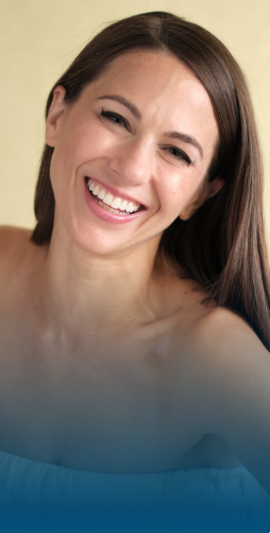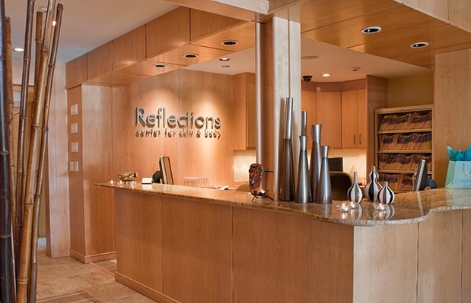Liposuction is a procedure that sculpts the body by removing unwanted fat from specific areas including the abdomen, hips, buttocks, thighs, knees, upper arms, chin, cheeks and neck. The procedure has been refined greatly through the years and the results are now predictably excellent in the right hands. Today, a number of new techniques, including laser liposuction have provided patients with better results and quicker recovery times than the past.
Liposuction is not a substitute for dieting and exercise; it is used when lifestyle changes and weight loss initiative no longer yield results and you desire something more to improve your body’s contours.
Liposuction is particularly well-suited for individuals who are of relatively normal weight, have localized pockets of fat and firm, elastic skin. The ideal candidate is physically healthy, psychologically stable and has reasonable expectations about what Liposuction can do. Liposuction can enhance your appearance and self confidence, but it can’t remove all of the fat from the body. This would be unsafe and inappropriate.
Some patients desiring liposuction come to learn that a tummy tuck is a better alternative for them. Sometimes both of these procedures are performed at the same time.
While it is possible to undergo liposuction at almost any age, you will obtain the best results if your skin still has enough elasticity to achieve a smooth contour following fat removal. In cases of mild sagging skin tightening lasers such as Thermage or Gentle Yag laser may be utilized in conjunction with liposuction.
During liposuction, fat is removed from under the skin with the use of a vacuum-suction canula (a hollow instrument) or an ultrasonic probe that emulfsies (breaks up into small pieces) the fat and then removes it with suction.
Liposuction is a very safe procedure with very few risks. The concerns are higher when liposuction is performed in individuals with diabetes, significant heart or lung disease, poor blood circulation, or those who have recently had surgery near the area to be contoured.
You will see a noticeable difference in the shape of your body quite soon after surgery. However, improvement will become even more apparent after about four to six weeks, when most of the swelling has subsided. After about three months, any persistent mild swelling usually disappears and the final contour will be visible.
Most patients find that they are more comfortable in a wide variety of clothes and more at ease with their body. A good diet and regular program of aerobic exercise will help you to maintain your new shape.
The Surgery
The time required to perform liposuction may vary considerably, depending on the size of the area, the amount of fat being removed, the type of anesthesia and the technique used.
Through a tiny incision, a narrow tube or cannula is inserted and used to vacuum the fat layer that lies deep beneath the skin. The cannula is pushed then pulled through the fat layer, breaking up the fat cells and suctioning them out. The suction action is provided by a vacuum pump or a large syringe, depending on the surgeon’s preference. If many sites are being treated, your surgeon will then move on to the next area, working to keep the incisions as inconspicuous as possible.
Fluid is lost along with the fat, and it’s crucial that this fluid be replaced during and after the procedure. The amount of fat that can and will be removed, as well as its location will directly affect the safety and outcome of the procedure. More is not necessarily better and this will be discussed with you during the consultation.
Smooth, natural looking results depend on the skills and experience of the surgeon performing the liposuction procedure and advanced training is required to perform this procedure safely. The anesthesiologist and rest of the surgical team play an important role in the procedure and you should pay careful attention to these details when choosing the location for your surgery. Look for a surgical facility that specializes in cosmetic surgery procedures like liposuction.
The patient satisfaction rate after liposuction is very high; however, imperfections in the final appearance can occur after liposuction. The skin surface may be irregular or asymmetric requiring further corrective action.
It is important to walk around soon after liposuction. You will be able to return to work within a few days but strenuous activity will need to be avoided for about a month. Bruising resolves within a few weeks, but swelling may be more prolonged.
Technique Variations
The basic technique of liposuction, as described above, is used in all patients undergoing this procedure. However, as the procedure has been developed and refined, several variations have been introduced.
Tumescent Liposuction: The tumescent technique is a relatively new liposuction method that can reduce post operative bruising, swelling and pain and the risk of needing a blood transfusion during surgery.
In the tumescent technique, areas of excess fat are injected with a large amount of anesthetic liquid containing lidocaine, epinephrine and intravenous fluid before liposuction is performed. The liquid causes the compartments of fat to become swollen, blanched and firm or “tumesced.” The expanded fat compartments allow the liposuction cannula to travel smoothly beneath the skin as the fat is removed. The long-acting effects of the anesthetic solution help to provide pain relief after the procedure and decrease the need for additional pain medication.
Light activity is usually resumed within the first few days after tumescent liposuction; normal activity can be resumed within a few weeks.
Patients are usually able to see a noticeable difference almost immediately after surgery. However, more improvement can be seen after three weeks, when most of the swelling has subsided. After about three months, any persistent mild swelling will disappear and the final contour will be visible.
Ultrasound-Assisted Lipoplasty (UAL)
This technique requires the use of a special cannula that produces ultrasonic energy. As it passes through the areas of fat, the energy explodes the walls of the fat cells, liquefying the fat. The fat is then removed with the traditional liposuction technique.
UAL has been shown to improve the ease and effectiveness of liposuction in fibrous areas of the body, such as the upper back or the enlarged male breast. It is also commonly used in secondary procedures, when enhanced precision is needed. In general, UAL takes longer to perform than traditional liposuction.
Women may have liposuction performed under the chin, on their hips, thighs, and stomach, and in the under arm and breast area.
For men, common sites include under the chin and around the waist. Liposuction may also be used in the reduction of enlarged male breasts, a condition known as gynecomastia.
Healthy, normal-weight people with elastic skin and pockets of excess fat are good candidates for surgery.
The best candidates for liposuction are of normal weight with localized areas of excess fat– for example, in the buttocks, hips, and thighs.
The surgeon inserts a cannula through small incisions in the skin. At the other end of the tube is a vacuum-pressure unit that suctions off the fat.
A snug compression garment worn after surgery helps reduce swelling.
Improvement will become apparent after about six weeks, when most of the swelling has subsided.
As healing progresses, a more proportional look will emerge.
A slimmer body contour can help you feel more confident and comfortable.







